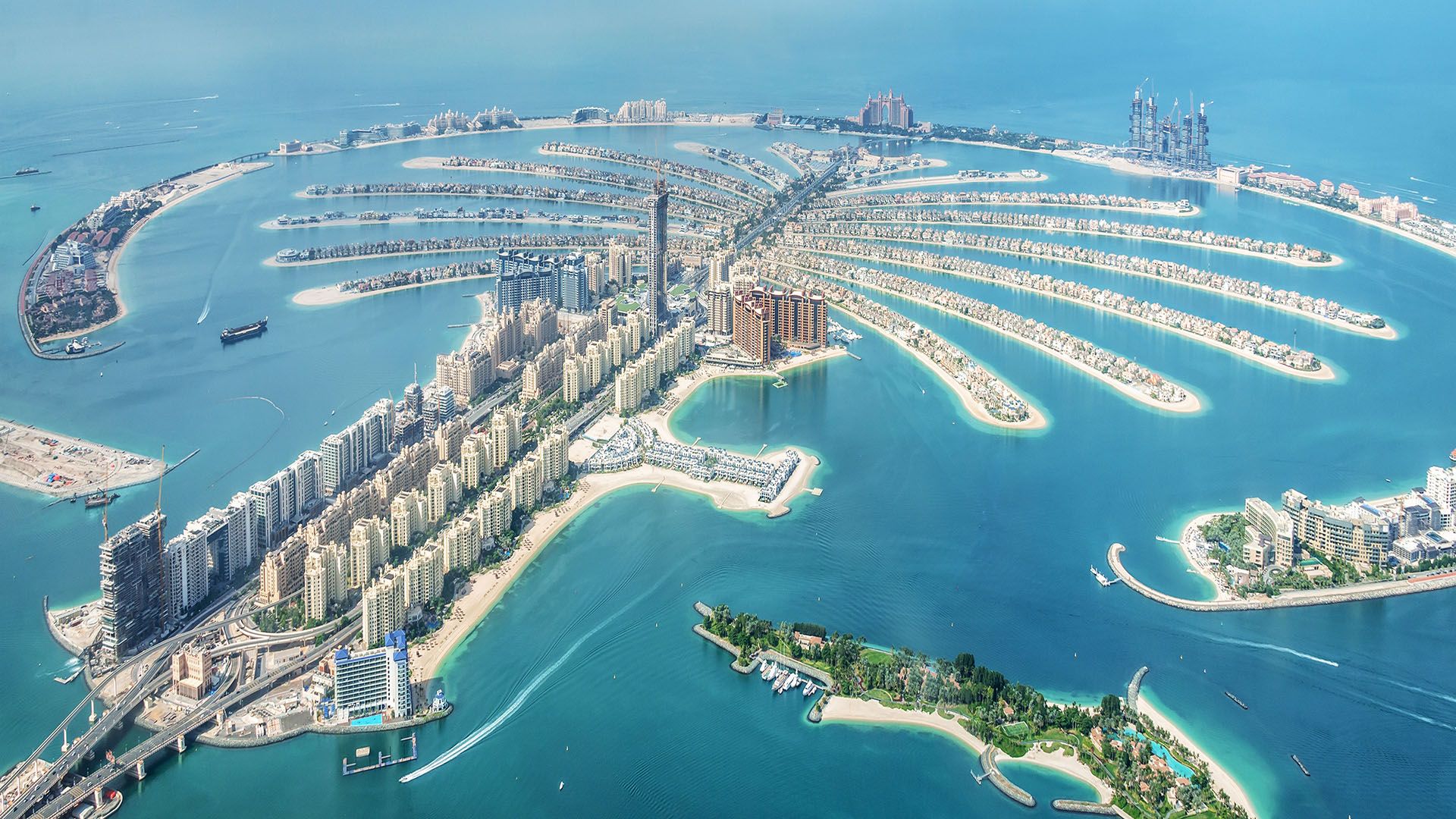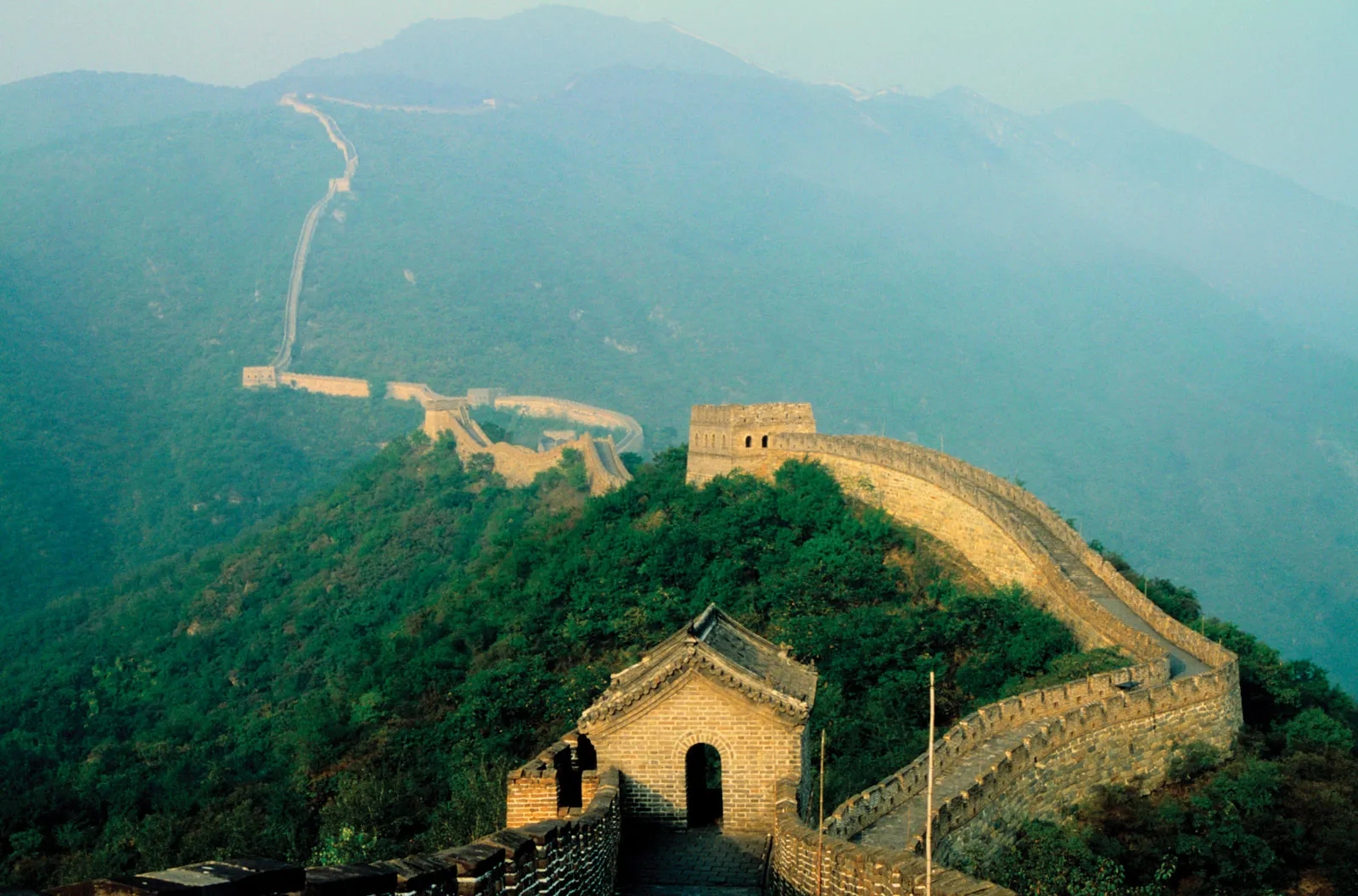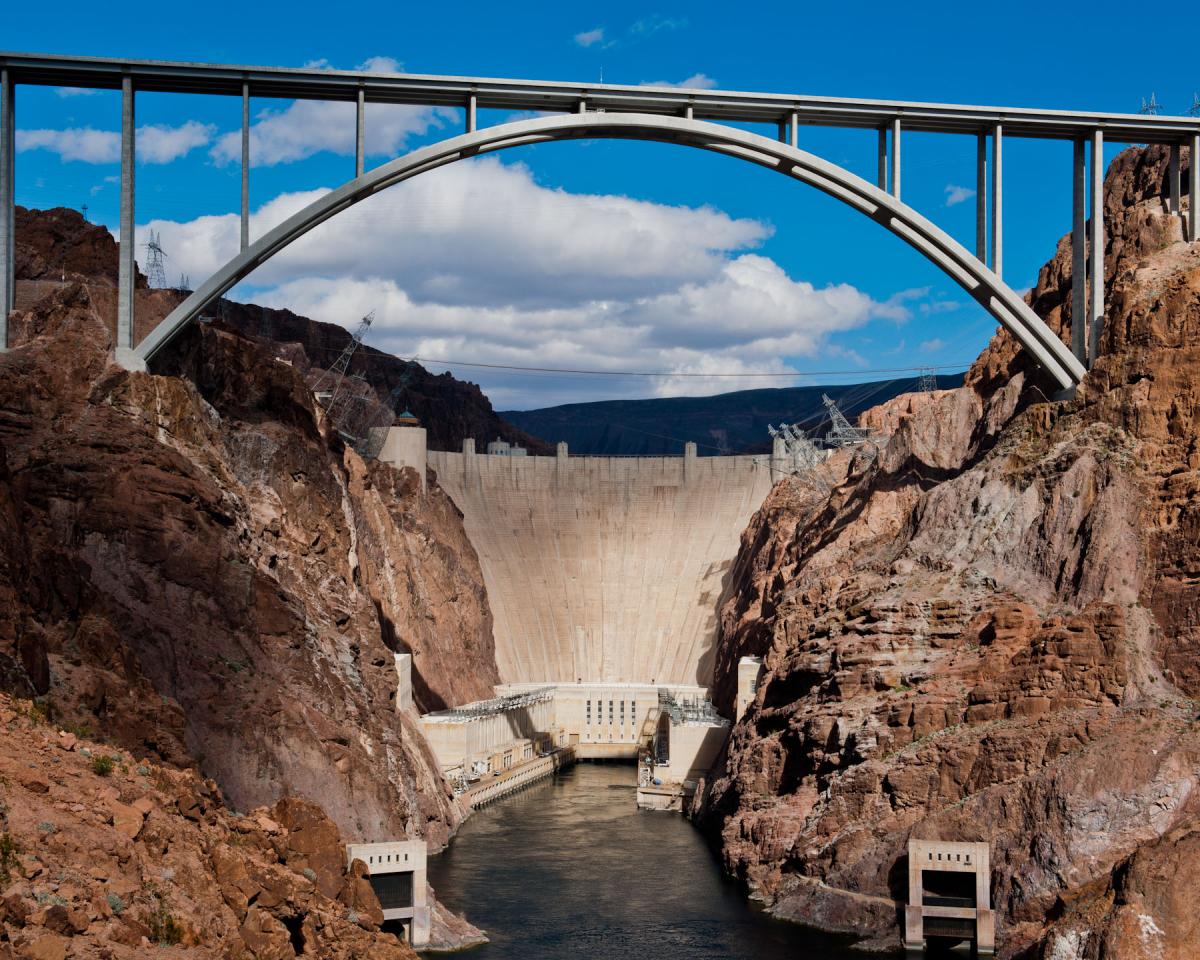Astonishing Feats Of Engineering - Be Amazed By Their Marvel
Engineering has always been a field of remarkable innovation and creativity. From the Great Pyramids of Giza to the towering skyscrapers of modern cities, engineers have pushed the boundaries of what is possible with their extraordinary feats of design and construction. Here are some of the most astonishing feats of engineering that have left us in awe.
Author:Dr. Felix ChaosphereReviewer:Xander OddityApr 26, 202313 Shares641 Views

Engineering has always been a field of remarkable innovation and creativity. From the Great Pyramids of Giza to the towering skyscrapers of modern cities, engineers have pushed the boundaries of what is possible with their extraordinary feats of design and construction. Here are some of the most astonishing feats of engineeringthat have left us in awe.
Examples Of Impressive Feats Of Engineering
Check out some of the examples of astonishing feats of engineering:
The Great Wall Of China
The Great Wall of China and The Panama Canal are two engineering marvels that have captivated people around the world. These feats of engineering are not only massive in scale but also display human ingenuity and innovation.
The Great Wall of China is a series of walls and fortifications built over thousands of years across the northern borders of China. The construction of the wall began in the 7th century BC, and the wall that is most commonly known today was built during the Ming Dynasty (1368-1644).
The wall stretches over 13,000 miles (21,000 km) and is the longest wall in the world. The wall was built to protect China from invasions by the Mongols, Manchus, and other nomadic groups that frequently raided Chinese territory.
The Great Wall of China is made of various materials such as brick, tamped earth, stone, and wood. The wall is up to 26 feet (8 meters) tall and 23 feet (7 meters) wide.
The most impressive aspect of the wall is its construction on steep mountain ridges and valleys. The wall also includes watchtowers, barracks, and other defensive structures. It is estimated that over one million workers died during the construction of the wall.
The Panama Canal
The Panama Canal is another engineering marvel that connects the Atlantic and Pacific Oceans through the Isthmus of Panama. The canal is approximately 50 miles (80 km) long and is considered one of the most significant engineering achievements of the 20th century. The canal was built between 1904 and 1914 by the United States and is still in operation today.
The construction of the Panama Canal was a monumental task that involved digging through the mountainous terrain of the isthmus and constructing locks to raise and lower ships through the canal.
The canal has a total of three locks, each with two chambers. The locks use water from Lake Gatun to raise ships 85 feet (26 meters) above sea level and then lower them back down to sea level on the other side of the canal.
The Panama Canal has greatly impacted globaltrade by shortening the shipping distance between the Atlantic and Pacific Oceans. Before the canal was built, ships had to travel around the southern tip of South America, which added thousands of miles to their journey. The canal has also increased the size of ships that can navigate through it, which has led to increased efficiency and reduced shipping costs.
The Burj Khalifa
The Burj Khalifa is a skyscraper located in Dubai, United Arab Emirates, that stands at an incredible height of 828 meters (2,716 feet). It was completed in 2010 and is currently the tallest building in the world.
The construction of the Burj Khalifa involved a great deal of technical ingenuity, as it was built on an unstable foundation that consisted of soft sand and rock. To overcome this challenge, engineers designed a foundation consisting of a 3.7-meter-thick (12-foot) reinforced concrete mat that sits on top of 192 bored piles that extend over 50 meters (164 feet) deep into the ground.
The building also features a unique Y-shaped design that helps to reduce wind loads and provides the necessary structural stability. The Burj Khalifa is not only a symbol of Dubai's economic prosperity but also a testament to the incredible feats of engineering that can be achieved with determination and innovation.
The Hoover Dam
The Hoover Dam, located on the border between Arizona and Nevada, is a concrete arch-gravity dam that was built in the 1930s during the Great Depression. It stands at 221 meters (726 feet) tall and spans the Colorado River, creating Lake Mead.
The dam is a marvel of engineering, with a foundation consisting of massive blocks of concrete that were poured one at a time, and then allowed to cure for a month before pouring the next layer. This process ensured that the concrete blocks would bond together and form a solid foundation.
The dam also features a series of penstocks that allow water to flow through turbines and generate electricity. In addition to providing hydroelectric power to the surrounding areas, the Hoover Dam also serves as a major tourist attraction, drawing millions of visitors every year.
The Channel Tunnel
The Channel Tunnel, also known as the Chunnel, is a 31-mile-long underwater rail tunnel that connects the United Kingdom with France. It is one of the most astonishing feats of engineering in modern times, and has become an iconic symbol of Anglo-French cooperation and technological achievement.
The idea of building a tunnel under the English Channel was first proposed in the early 19th century, but it wasn't until the 20th century that serious efforts were made to turn this vision into a reality.
In 1986, after years of planning and negotiation, construction of the tunnel finally began. The project was a massive undertaking, involving the collaboration of engineers, architects, geologists, and workers from both the UK and France.
The tunnel consists of three interconnected tunnels: two rail tunnels and a smaller service tunnel. The rail tunnels are 7.6 meters in diameter and run parallel to each other, with a distance of 30 meters between them. The service tunnel runs between the two rail tunnels and provides access for maintenance and emergency services.
The construction of the tunnel was a major technical challenge, as the teams had to deal with a variety of geological and environmental conditions. The tunnel runs through a layer of chalk and marl, which posed a risk of collapse during the construction process.
To mitigate this risk, the engineers used a technique known as "tunnel boring," in which a giant drilling machine was used to excavate the rock and soil, while simultaneously installing concrete segments to reinforce the tunnel walls.
The tunnel was also designed to withstand a range of environmental hazards, including earthquakes, flooding, and extreme temperatures. It is equipped with sophisticated ventilation and cooling systems, as well as fire suppression and detection systems.
The Channel Tunnel officially opened in 1994, and has since become a vital transportation link between the UK and continental Europe. It has greatly facilitated travel and trade between the two regions, and has helped to strengthen economic and cultural ties between the UK and France.
The Channel Tunnel is not only a remarkable engineering achievement, but also a testament to the power of international cooperation and collaboration. It is a symbol of the possibilities that can be achieved when people come together to work towards a common goal, and serves as a source of inspiration for future generations of engineers and innovators.
People Also Ask
What Is An Example Of An Astonishing Feat Of Engineering?
The Channel Tunnel, The Great Wall of China, The Panama Canal, The Burj Khalifa, and The Hoover Dam are all examples of astonishing feats of engineering.
How Did Engineers Build The Great Wall Of China?
The Great Wall of China was built using a combination of bricks, tamped earth, and stone, and construction techniques included the use of ramps, pulleys, and sledges to move materials.
What Was The Biggest Challenge In Building The Panama Canal?
The biggest challenge in building the Panama Canal was controlling the flow of water, as the canal runs through a region with high rainfall and frequent floods. To address this, engineers built a system of locks and dams to regulate water flow.
How Tall Is The Burj Khalifa?
The Burj Khalifa is currently the tallest building in the world, standing at a height of 828 meters (2,716 feet).
How Long Did It Take To Build The Channel Tunnel?
Construction of the Channel Tunnel, which links the UK and France via an undersea rail tunnel, took six years and involved the excavation of over 13 million cubic meters of soil and rock.
Conclusion
These astonishing feats of engineering demonstrate the incredible power of human innovation and creativity. From ancient wonders like the Great Wall of China to modern marvels like the Burj Khalifa, engineers have continuously pushed the boundaries of what is possible in design and construction. These remarkable achievements will continue to inspire us for generations to come.

Dr. Felix Chaosphere
Author
Dr. Felix Chaosphere, a renowned and eccentric psychiatrist, is a master of unraveling the complexities of the human mind. With his wild and untamed hair, he embodies the essence of a brilliant but unconventional thinker. As a sexologist, he fearlessly delves into the depths of human desire and intimacy, unearthing hidden truths and challenging societal norms.
Beyond his professional expertise, Dr. Chaosphere is also a celebrated author, renowned for his provocative and thought-provoking literary works. His written words mirror the enigmatic nature of his persona, inviting readers to explore the labyrinthine corridors of the human psyche.
With his indomitable spirit and insatiable curiosity, Dr. Chaosphere continues to push boundaries, challenging society's preconceived notions and inspiring others to embrace their own inner tumult.

Xander Oddity
Reviewer
Xander Oddity, an eccentric and intrepid news reporter, is a master of unearthing the strange and bizarre. With an insatiable curiosity for the unconventional, Xander ventures into the depths of the unknown, fearlessly pursuing stories that defy conventional explanation. Armed with a vast reservoir of knowledge and experience in the realm of conspiracies, Xander is a seasoned investigator of the extraordinary.
Throughout his illustrious career, Xander has built a reputation for delving into the shadows of secrecy and unraveling the enigmatic. With an unyielding determination and an unwavering belief in the power of the bizarre, Xander strives to shed light on the unexplained and challenge the boundaries of conventional wisdom. In his pursuit of the truth, Xander continues to inspire others to question the world around them and embrace the unexpected.
Latest Articles
Popular Articles

